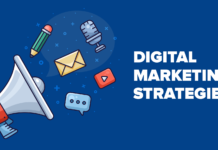Consumers nowadays demand a customized customer service that caters to their specific needs. To meet these demands, you must first consider what your audience wants and needs, as well as how to better meet those needs than your competitors. The CRM method aids your company in achieving these objectives. The CRM method aids your company in achieving these objectives. It’s difficult to find and enforce a CRM that gives people in the company the knowledge they need at the right time. The challenges of CRM implementation are numerous, and most businesses do not begin the process with sufficient preparation.
So, What Makes a CRM Implementation Successful?
The bad news is that CRM implementation presents many challenges; you must get a lot of things right, and each organization is unique. The good news is that there are tried-and-true guidelines and CRM implementation best practices that, if followed, can help you avoid disaster. And we’ve covered them all in this detailed CRM implementation guide! Let’s get started on the CRM preparation process so you can have a successful implementation.
- Determine why your company needs a CRM system.
Your company can get the most out of a CRM system if you first figure out which places you want to change or which problems you need to solve.
- Look through the various CRM vendors to find one that will be a good match for your company.
Consider the following:
Service quality of the vendor
Experience in the CRM industry by the vendor
Customer testimonials
- Prior to introducing the CRM system, instill sound corporate practices.
The last thing you want to do is automate inefficient processes or implement a CRM framework that causes you to alter your business practices. Assess the consistency of your business procedures and make any necessary improvements, then ensure that the CRM system you choose can accommodate your procedures.
- Develop a formula to evaluate the system’s benefits for your company.
Intangible benefits, such as enhanced efficiency and improved communication, are relatively easy to measure, but measurable payoffs, such as a million-dollar sales boost or a 10% rise in consumer retention, necessitate some forethought. The benefit assessment of the system is important because it measures the effectiveness of your customer plan and validates the system’s importance.
- Determine which parts of the company can use the device.
To ensure that everyone’s needs are addressed, gather feedback from all regions. Since everybody would use the system in order for it to work, you’ll want to make sure that all users are happy with its features. There are various types of customer relationship management systems, so make sure you choose the right one for your company.
- Create a reasonable budget that includes all costs associated with the CRM system’s implementation.
Be sure to communicate all of your goals to your CRM partner so that you can both stick to your budget.
- Estimate how you expect the framework to develop in the future during the first step of your CRM implementation.
Are there any aspects of the CRM framework that you’d like to customize to satisfy your specific requirements? How do I add users? Check to see if the machine would be able to handle the changes.
- After the first phase of CRM implementation is complete, you will want to consider additional deployment phases.
For example, after a few months of use, you might want to expand the system to other departments, add new modules, or make other customizations that you didn’t think of during the initial implementation.
9.Determine if the system may need to communicate with other applications, such as the accounting or human resource systems.
Talk to the provider about the ease and cost of integration so you know what to expect. What kind of software integrations will help you run your company more efficiently?
- Use a trickle-down method to implement the CRM scheme.
To instill a sense of importance and dedication to using the method, support for the project must come from the top levels of management.
What Does a Customer Relationship Management System (CRM) Do?
CRM software, at its most basic level, enables marketers and salespeople to manage and analyze relationships with current and potential customers. It keeps track of any transaction with the company and gathers customer information. This way, when a marketer speaks with a client, the marketer is still aware of who they are and their previous interactions with the company. This personalizes the engagement, enhances conversion opportunities, and fosters consumer trust and loyalty.
CRMs have features that allow you to monitor customer/company interactions through a variety of touch points, such as those from: Ways of communication, Engines of search, e-mail, Calls, Use of social media. Certain processes are handled by the app, which can automate routine tasks for advertisers, set reminders for important events, and show notifications if anything requires immediate attention. Some CRMs also have analytics features, allowing you to monitor the effectiveness of various lead generation and conversion efforts. Sales and marketing teams may use CRM software in conjunction with marketing automation to handle the entire sales and marketing funnel, from lead qualification to opportunity management, forecasting, and deal closing.
How Does It Work?
A CRM monitors a potential customer’s activities through social media, email, and website platforms as a company creates eligible leads. Before leading them—or helping you direct them—through a calculated path that hits all the hot spots, the machine gathers as much knowledge as possible about leads. If, on the other hand, this lead provides information indicating that they’re looking for paint in local stores to do the work themselves, this lead could fall out of the funnel. In that scenario, It would downplay the lead and steer salespeople’s attention to more likely prospects.
Finally, one of the most important advantages of a CRM method is that it directs a company’s time and resources into the most successful activities rather than a scattershot “speak to everybody and hope for the best” strategy.


















